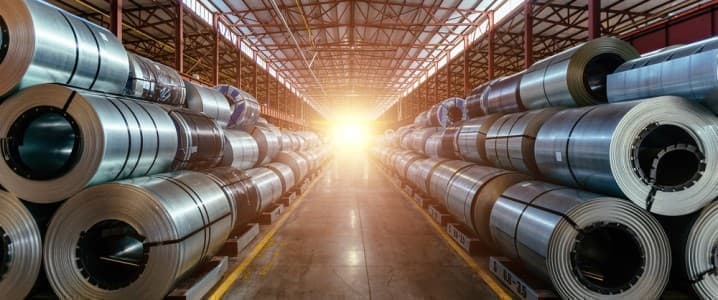
The steel industry in the European Union is experiencing significant pressure as major players, notably ArcelorMittal, seek to increase prices for hot rolled coil products. On August 5, the Luxembourg-based company announced plans to raise its asking price to €610 (approximately $705) per metric ton for deliveries in the fourth quarter. This represents an increase of nearly 3.4% from the previous week’s target of €590 (around $685).
Market reactions to these proposed increases have been mixed. Industry traders are skeptical about whether buyers will accept the new prices, especially given that offers in the week of July 21 were significantly lower, ranging from €530 to €540 (or $615 to $625). The prevailing sentiment suggests that many purchasers are hesitant to commit to higher prices amidst fluctuating market conditions.
Market Dynamics and Future Projections
The cold rolled coil segment, which typically carries an average premium of €100 (around $115) per metric ton, illustrates the complexities of the current market. One trader commented, “Right now, not yet,” indicating a reluctance among buyers to absorb further price hikes. Despite this hesitation, some analysts predict that the resumption of construction activities as summer ends, coupled with the impending implementation of the Carbon Border Adjustment Mechanism (CBAM) on January 1, 2026, may eventually compel buyers to accept the higher prices.
Concerns around the CBAM are particularly pronounced. The mechanism aims to impose stricter regulations on carbon emissions and could significantly affect steel imports. The uncertainty surrounding the rules has led to apprehension among buyers, who fear potential back charges for steel acquired in 2025. The trader explained that “EU mills are for sure pushing prices upwards due to the uncertainty surrounding CBAM,” highlighting the urgent need for clarity on the regulations to facilitate ongoing imports in 2026.
Calls for Strengthened Safeguards
In response to these market dynamics, the European Steel Association (Eurofer) has taken steps to advocate for stronger protective measures ahead of the CBAM’s implementation. On July 29, Eurofer submitted a proposal to the European Commission urging a reduction of 40-50% in import quotas across the board. This initiative is part of a broader strategy to ensure that the European steel industry can return to sustainable utilization rates, ideally reaching the target rate of 85%, as outlined in the Commission’s action plan.
Eurofer stressed the importance of translating the ambitions in the Steel and Metals Action Plan into tangible actions that provide meaningful protection for local manufacturers. The association’s proposal calls for the replacement of existing steel safeguards by July 1, 2026, in an effort to combat global overcapacity issues affecting the sector.
As the steel industry navigates these challenges, the outcomes of price negotiations and regulatory changes will likely have lasting implications for market stability and the competitive landscape in Europe. The coming months will be critical as stakeholders await further developments and clarity regarding the future of steel pricing and international trade regulations.






